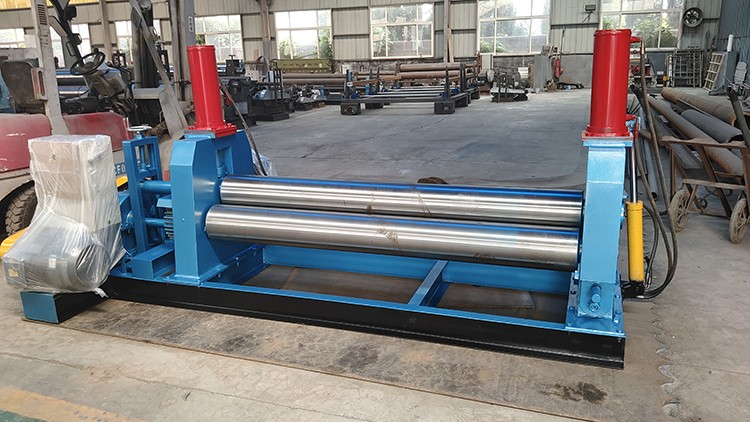

In the field of professional plate rolling machine manufacturing, we have been in business for more than 10 years. Today, we would like to introduce the history of plate rolling machines:

As a key piece of equipment for metal sheet forming, plate rolling machines have undergone a long evolution from primitive manual operation to modern intelligent manufacturing. This development process not only reflects the progress of metal processing technology, but also bears witness to the transformation of human industrial production methods.
1. The early days of manual processing
Before the Industrial Revolution in the 18th century, the bending of metal sheets was entirely dependent on manual labor. Craftsmen used wooden hammers and iron anvils, repeatedly striking the metal sheets to gradually deform them. This method required extremely high skill and was highly inefficient, allowing only a small number of simple components to be processed each day. The simple edge-rolling tools that emerged at the time utilized the principle of leverage and wooden rollers to produce cylindrical vessels such as barrels, and can be considered the earliest prototype of a sheet metal rolling machine.
2.Breakthroughs in the Mechanical Age
In the mid-19th century, with the widespread application of steam engines, the first generation of mechanical plate rolling machines came into being. These devices used cast iron frames and gear drives to rotate steel rollers. Operators had to manually adjust the roller spacing and rely on experience to control the feed speed. The three-roller asymmetrical plate rolling machine patented in the UK in 1853 already had the basic structural features of modern equipment. During this period, the thickness of rolled plates could reach 6–8 millimeters, with production efficiency nearly twenty times higher than manual methods.
3. The Revolution in Electric Power Drives
At the beginning of the 20th century, the widespread adoption of electric motors ushered in a new phase of development for plate rolling machines. Electric plate rolling machines utilize worm gear mechanisms to adjust roller positions, enabling more precise pressure control. The four-roller plate rolling machines introduced in the 1930s incorporated auxiliary roller devices, enabling pre-bending and finishing operations, thereby reducing the straight sections at the ends of the plates by 80%. The introduction of hydraulic systems further simplified operations, replacing cumbersome handwheel adjustments with lever controls, enabling a single operator to roll steel plates up to 20 millimeters thick.
4. Application of CNC Technology
In the 1970s, computer-controlled technology began to be applied to plate rolling machines. Early CNC systems enabled digital setting of roller displacement, achieving processing accuracy of ±0.1 millimeters. In the 1990s, servo motors and touchscreen controls became standard features, allowing operators to directly input sheet metal parameters, with the system automatically calculating roller trajectories. Modern rolling machines are generally equipped with laser detection devices that can correct sheet position deviations in real time, ensuring that the roundness error of the rolled cylinder does not exceed 0.05% of the diameter.
5. Intelligent Development Direction
Current roll forming technology is moving toward intelligence. The latest models integrate 3D scanning systems that can automatically identify the initial curvature of the sheet metal and optimize the processing path. Remote monitoring platforms can collect equipment operating data in real time and predict the service life of key components. Some high-end equipment has self-learning capabilities, continuously optimizing process parameters by accumulating processing data. The establishment of a material database enables equipment to automatically adjust the bending radius compensation value for different grades of steel.
6. Insights from Technological Evolution
The development of plate rolling machines has shown clear stages. It took nearly a century to transition from manual to electric, but only 30 years to transition from mechanical control to digitalization. This accelerating trend indicates that the advancement of modern industrial technology increasingly relies on interdisciplinary integration. In the future, plate rolling machines will not only be processing equipment but also an integral part of intelligent manufacturing systems, and their development will continue to drive technological innovation in the metal processing industry.
If you are interested in plate rolling machines, please contact us.
 Address:Room 1202, Detaitang Building, No. 118 Huaguang Road, Zhangdian District, Zibo, Shandong
Address:Room 1202, Detaitang Building, No. 118 Huaguang Road, Zhangdian District, Zibo, Shandong WhatsApp:+8615653328535
WhatsApp:+8615653328535 Wechat: +8615965331535
Wechat: +8615965331535  E-mail:zs@sdsmachinery.com
E-mail:zs@sdsmachinery.com